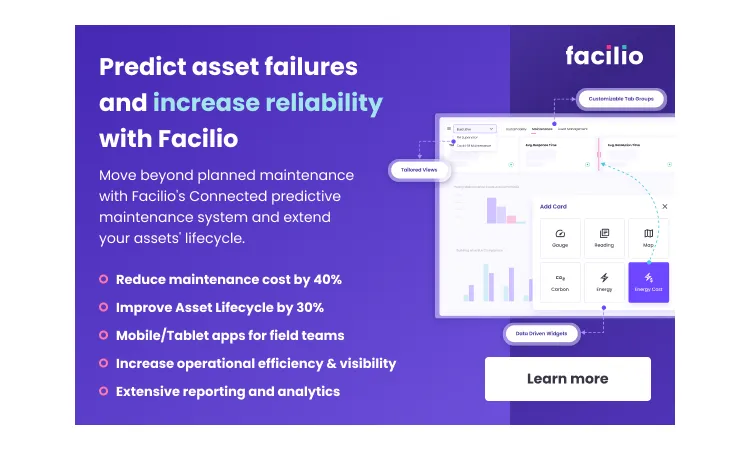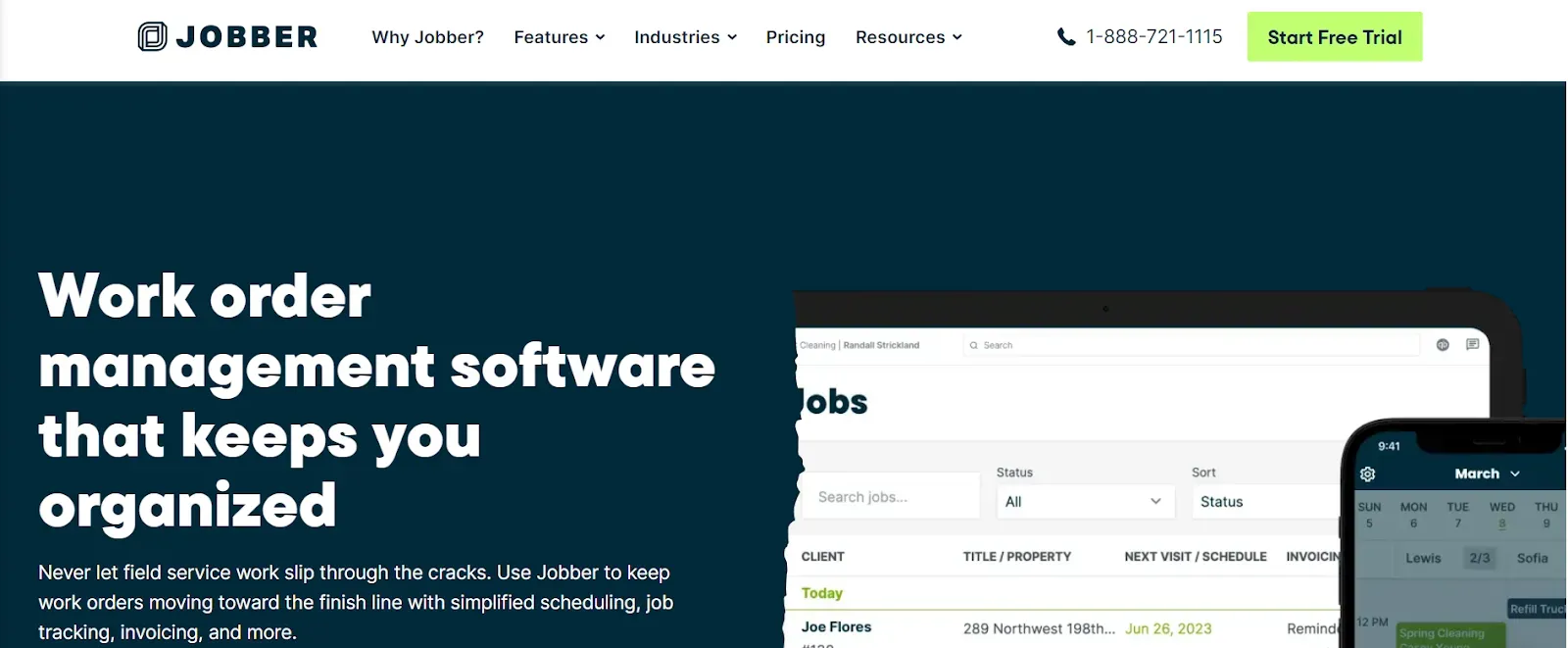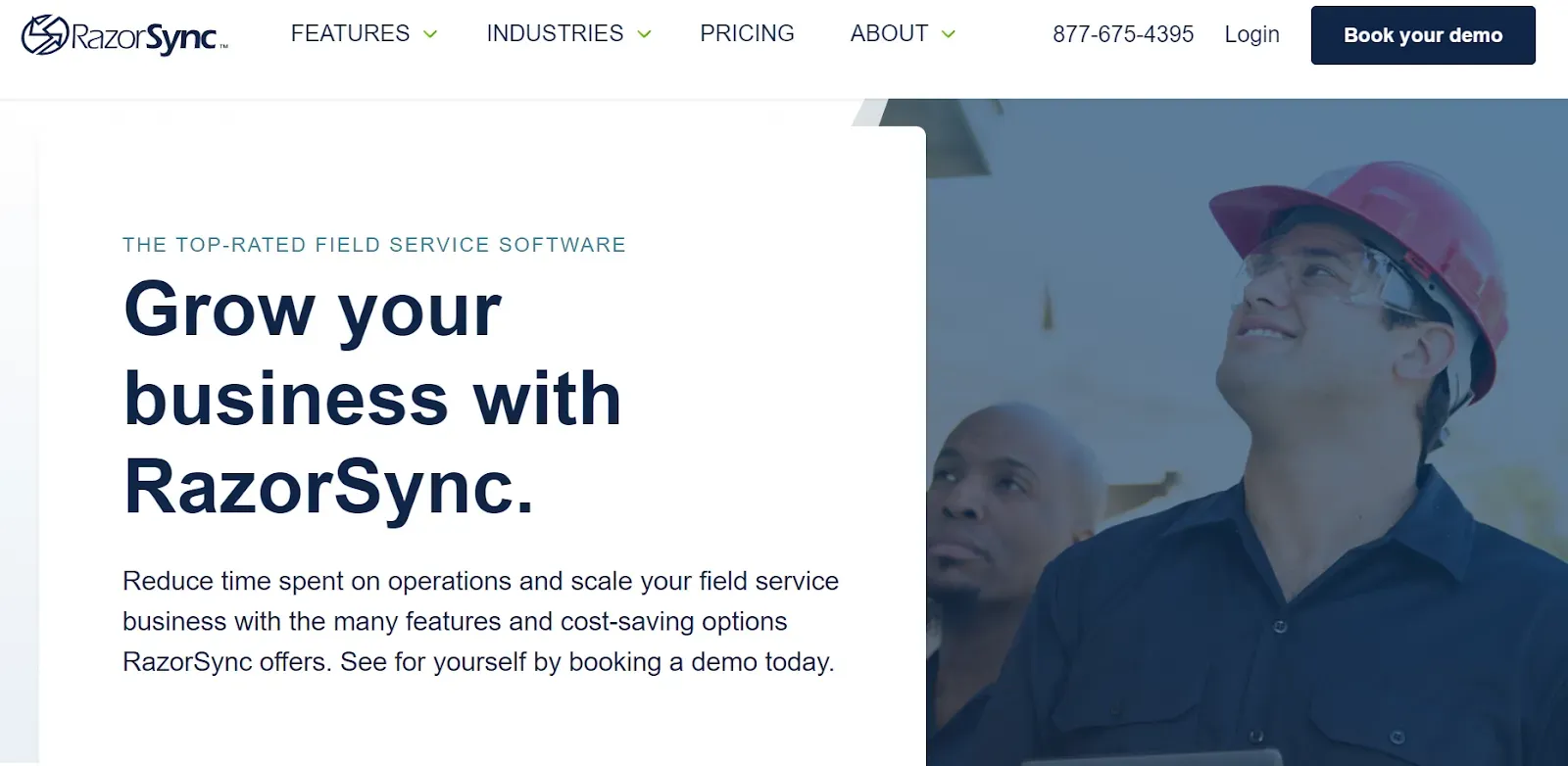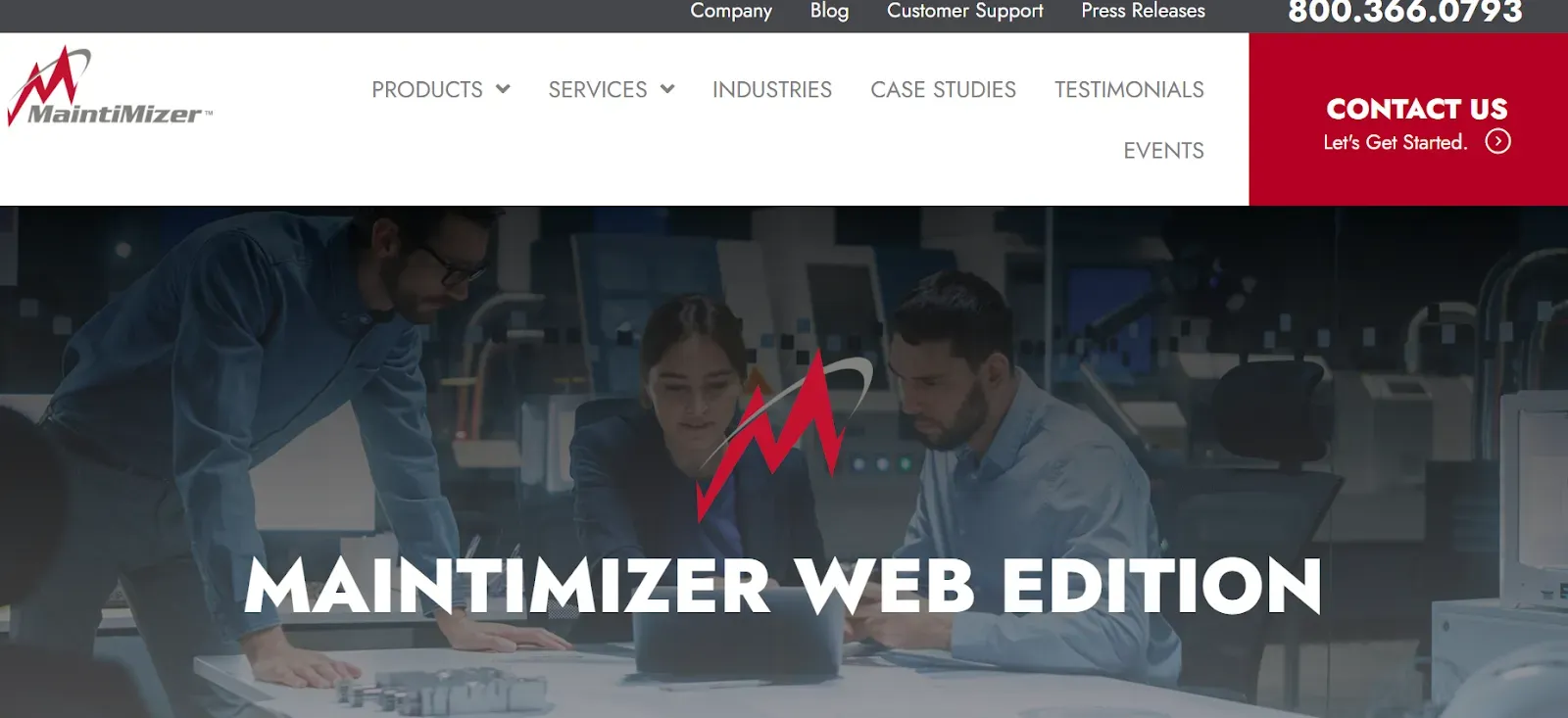Top 10 Best Work Order Software for Enterprises in 2025
What is work order software?
Work orders keep facilities and equipment running, but many teams still rely on spreadsheets or outdated systems that hinder their operations. Missed tasks, delays, and rising costs quickly follow.
Modern work order software solves this by making it easy to create, assign, and track tasks in one place. The best platforms improve accountability, automate routine workflows, and give managers real-time visibility to prevent downtime.
In this guide, we’ll explore the best work order software, compare leading options, and share how to choose the right fit, including solutions designed for enterprises and small businesses alike.
By the end, you’ll know which system can help your team move from reactive fixes to streamlined, proactive operations.

What are the benefits of a work order management system?
The right work order management software goes beyond tracking tasks; it reshapes how teams plan, execute, and measure maintenance activities.
Some of the key benefits include:
a) Improved visibility and accountability
Every request, update, and completion is logged in a single system, making it easier to see what’s pending, who’s responsible, and whether deadlines are met. This transparency keeps teams accountable and ensures nothing slips through the cracks.
b) Faster response times and reduced downtime
With instant notifications and mobile access, technicians can respond to issues quickly. Managers can prioritize urgent tasks and allocate resources effectively, helping minimize equipment downtime and service disruptions.
c) Easier compliance tracking and reporting
Work order systems capture digital records of inspections, audits, and completed tasks. This makes it simpler to demonstrate compliance during audits and maintain industry or safety certifications without extra paperwork.
d) Cost efficiency through automation
By automating scheduling, approvals, and status updates, teams save time otherwise lost to manual follow-ups.
Over time, this efficiency lowers labor costs, prevents unnecessary repairs, and extends asset life cycles.
How to choose the best work order software
With so many options available, picking the right solution comes down to matching software capabilities with your operational needs.
Here are the key criteria to consider when evaluating the best work order management software:
- Ease of use and mobile accessibility: A tool is only effective if your team adopts it. Look for software with an intuitive interface and mobile apps that allow technicians to create, update, and close work orders directly from the field.
- Scalability from small business to enterprise: Your needs today may not be the same in two years. The best systems grow with you, offering flexibility for small teams while supporting multi-site enterprises with complex workflows.
- Integration with CMMS, ERP, BMS, and IoT systems: Work orders don’t exist in isolation. Choose a platform that connects with your existing CMMS, workplace management app, ERP, building management systems (BMS), or IoT devices, so data flows seamlessly across your operations.
- Reporting and analytics: Good software doesn’t just track tasks—it provides insight. Reporting dashboards should highlight key metrics like average resolution times, recurring issues, and resource utilization, enabling data-driven decisions.
- Pricing model and support: Finally, evaluate the cost structure.
Does the vendor offer transparent pricing that fits your budget?
Beyond cost, check the quality of customer support and training, as these will determine how quickly your team can realize value.
Best work order management software in 2025: A quick comparison
After extensive research, we've compiled a list of the top ten work order software management solutions worth keeping an eye on. While we haven't personally tested each one, we've gathered information from user feedback, reviews on reputable platforms, ratings, testimonials, and carefully analyzed the features of each product.
Best work order management software in 2025
Choosing the right work order software isn’t the same for every organization. Enterprises need tools that can handle multi-site operations, complex workflows, and integrations with other business systems.
Small businesses, on the other hand, look for simplicity, affordability, and mobile-friendly features that keep teams efficient without added complexity.
In this section, we’ve highlighted the 10 best work order software in 2025, based on features, scalability, and user reviews, to help both enterprises and SMBs find the right fit.
Let's go through each of the work order software to understand what sets them apart.
1. Facilio
Enterprise-ready work order management system

Facilio offers the most feature-driven work order software on the list.
It's a unified computerized maintenance management system (Connected CMMS) that provides a one-stop platform for handling all the work order information for your maintenance teams.
Its real-time data insights give a push to your service request and work order process. With the ability to prioritize tasks on its consolidated platform, Facilio presents a flexible work order solution with improved maintenance oversight for operational continuity.
With this software, you can automate work orders using various triggers, such as dates, times, alarms, meter readings, or any unusual activity you define.
Plus, you can stay ahead of any potential issues by proactively monitoring asset health, and set up work schedules for routine checks.
Facilio’s work order software allows you to connect asset actions to alarm triggers to automatically generate work orders and receive instant notifications on asset repair or replacement status.
Want to learn more?
Schedule a demo now and learn what Facilio can do for your business.
Key features of Facilio’s work order software
- Centralized work order management: Create, assign, and track all service requests from a single platform, ensuring nothing slips through the cracks.
- Mobile-first execution: Technicians can receive notifications, update status, and close work orders in real time using the mobile CMMS app.
- Smart automation: Automate task assignments, approvals, and escalations to cut down on manual effort and reduce response times.
- Powerful integrations: Connect seamlessly with ERP, BMS, IoT devices, and other FM systems to enable data-driven decision making.
- Analytics and reporting: Gain visibility into task performance, resolution times, and recurring issues with modern-looking, intuitive reports and dashboards that help improve efficiency.
What users like
“The product is synonymous with a clean look and comprises a user-friendly interface. It is fast and shows real-time insights relevant to the situation. However, the most attractive feature of Facilio's software is its easy platform for all users to collaborate and contribute.”
Facilio review, Chris K.
Rating - 4.0 ⭐️⭐️⭐️⭐(Based on Capterra reviews )
See why top CRE leaders are betting their future on data-driven O&M. Check out
2. BookingKoala
Small business work order app for service teams

UpKeep is a cloud-based work order and maintenance management software designed to streamline facility operations, improve team collaboration, and reduce downtime.
With its mobile-first approach, it allows technicians and managers to easily track, schedule, and complete work orders anytime, anywhere.
Key features of UpKeep work order software
- Mobile Work Order Management – Create, assign, and close work orders on the go.
- Preventive Maintenance Scheduling – Automate recurring tasks and inspections.
- Inventory & Asset Tracking – Manage spare parts and equipment details in real-time.
- Reporting & Analytics – Gain insights into asset performance and costs.
- Team Collaboration Tools – Message, update, and share files within work orders.
Pros & Cons
Pros:
- Simple, intuitive mobile interface for technicians.
- Strong preventive maintenance automation.
- Helpful reporting and asset insights.
Cons:
- Limited customization for advanced use cases.
- It can get costly for larger teams.
- Offline functionality is somewhat restricted.
Pricing Tiers
- Starter: Around $45/user/month – basic work order management.
- Professional: ~$75/user/month – adds advanced asset management and reporting.
- Business Plus: Custom pricing – for large teams, with integrations and premium support.
Best Suited For
UpKeep is ideal for small to mid-sized maintenance teams, facility managers, and organizations in industries like manufacturing, property management, and utilities that need mobile-first work order tracking and preventive maintenance scheduling.
3. Jobber
Field service work order software with scheduling

Jobber is a go-to field service work order software for service-focused businesses. It offers CRM tools like client reminders, search, and history. With Jobber, you can raise work orders, optimize routes, and easily handle quotes. It also offers a mobile application.
Key features of Jobber
- The user interface is navigable with a well-organized control panel
- Supports sending booking confirmations in various formats
- GPS feature verifies crew locations, addressing disputes about service delivery times
Jobber limitations
- The invoice feature lacks detailed options, such as displaying job balances alongside paid invoices
- Job forms created within the system are not visible from the active job or visit screen
Jobber pricing
- Core: $40/month (annual plan)
- Connect: $104/month (annual plan)
- Grow: $200/month (annual plan)
Jobber ratings and reviews
G2: 4.4/5 (221+ reviews)
Best suited for
Small businesses and mid-market companies in consumer services, construction, manufacturing, hospitality, and facilities services sectors
4. RazorSync
Mobile-friendly work order app for contractors

RazorSync is a work order management software that provides a desktop and mobile application. It allows you to maintain comprehensive records of your customer services and reduce workload.
Its CRM module enables tracking service history and current customer information.
Key features of RazorSync
- Record-keeping capabilities that help streamline administrative tasks
- GPS tracking that allows offices to monitor and adapt field workers' schedules in real-time
- User-friendly interface consolidates customer information in one accessible location
RazorSync limitations
- QuickBooks integration lacks full functionality, requiring manual billing and payroll creation
RazorSync pricing
- Solo: $85/month (annual plan)
- Team: $175/month (annual plan)
- Pro: $360/month (annual plan)
- Enterprise: Pricing available on request
RazorSync ratings and reviews
Capterra: 4.3/5 (497+ reviews)
Best suited for
Sectors like HVAC, IT, or computer repair, cleaning services, and lawn care
5. Fiix
AI-powered work order management software

Fiix CMMS offers an efficient work order management platform that helps teams organize, automate, and complete maintenance tasks. Through an intuitive dashboard, users can track work orders, assign jobs, and monitor progress to ensure smooth workflow and reduced equipment downtime.
Key features of Fiix work order software
- Quick work order creation and assignment
- Real-time status updates and tracking
- Centralized dashboard for all work orders
- Automated notifications and reminders
- Mobile access for field technicians
Pros:
- Fast work order generation and scheduling
- Visually clear dashboard for tracking work orders
- User-friendly for maintenance teams
Cons:
- Limited advanced customization for complex workflows
- Higher pricing for features like integrations
- May require training for large teams
Pricing Tiers
- Free: Basic work order functionality
- Basic: $45/user/month – enhanced work order workflows
- Professional: $75/user/month – advanced assignment, mobile features
- Enterprise: Custom pricing – integrations, bulk processing
Best suited for
Fiix is ideal for small to mid-sized organizations seeking a simple, effective way to track, assign, and manage work orders, especially in manufacturing, facilities, and utilities.
6. MaintainX
Real-time work order app for frontline teams

MaintainX is a dedicated work order management software designed to simplify and accelerate maintenance operations for frontline teams. Its mobile-first approach allows users to create, assign, and track work orders anytime, minimizing administrative delays and boosting accountability.
Teams can attach photos, notes, and checklists directly to each task, ensuring comprehensive job documentation and communication. With real-time notifications and task status updates, supervisors know exactly when work is initiated and completed.
Key Features of MaintainX
- Rapid work order creation on web & mobile
- Real-time task assignment and updates
- Customizable digital forms for work orders
- Direct messaging within work orders
- Instant notifications and completion tracking
Pros & Cons
Pros:
- Extremely fast work order processing via mobile apps
- Unlimited work orders on most plans
- Simple collaboration features for frontline teams
Cons:
- Some reporting features are gated in higher-priced plans
- Integrations are offered mainly on premium tiers
- Limited advanced workflow rules in entry-level plans
Pricing tiers
- Free: Unlimited work orders for small teams
- Essential: ~$10/user/month – mobile/web access, core work order features
- Premium: ~$39/user/month – advanced assignment, analytics
- Enterprise: Custom pricing – advanced workflows, integrations, support
Best suited for
MaintainX is best for businesses needing straightforward, mobile-enabled work order management, such as property managers, hospitality, and light manufacturing operations.
7. eMaint
CMMS with advanced work order management tools

eMaint Work Order Software streamlines the process of submitting, tracking, and completing maintenance tasks. Its flexible platform allows organizations to automate work order workflows, improve task accountability, and document performance, all accessible through web and mobile.
Designed for teams of any size, eMaint boosts maintenance efficiency by providing real-time status tracking and customizable notifications.
Key features
- Fast work order creation and assignment
- Mobile work order access and updates
- Automatic email notifications and reminders
- Customizable fields and dashboards
- Comprehensive history tracking and reporting
Pros:
- Highly configurable for diverse industries
- Robust real-time tracking for maintenance history
- Integrates smoothly with business applications
Cons:
- Steeper learning curve for new users
- Higher pricing for advanced features
- Occasional lag on the mobile interface
Pricing tiers
- Team: $33–$69/user/month – basic work orders, mobile app
- Professional: $85/user/month – advanced workflows, analytics
- Enterprise: Custom pricing – unlimited requests, API, integrations
Best suited for
eMaint is ideal for organizations of all sizes needing a flexible, trackable system to manage and optimize maintenance work orders across industries like manufacturing, healthcare, and facilities management.
8. Eptura
Enterprise work order software with analytics

Eptura (formerly Hippo CMMS) provides a simple and intuitive work order system, making it easy for teams to request, schedule, and resolve maintenance tasks. Its user-friendly dashboard, mobile access, and visual floor plan tools enable quick task assignment, tracking, and completion, ensuring facilities remain operational and compliant.
Key features
- One-click work order creation
- Calendar and dashboard scheduling
- Mobile app for remote updates
- Work order status notifications
- Visual asset and equipment tracking
Pros:
- Intuitive, minimal learning curve for staff
- Excellent customer support
- Visual floor plan integration for asset location
Cons:
- Limited deeper customization options
- Some advanced features (e.g., integrations) are only in higher tiers
- Inventory management could be more robust
Pricing tiers
- Lite: $40/user/month – basic work orders, assets
- HipPro: $120/user/month – calendar, mobile, barcoding
- HipPro+: $170/user/month – SSO, advanced onboarding
Best suited for
Hippo CMMS is best for businesses seeking a straightforward, visual work order tool, including property managers, schools, and organizations managing multiple locations.
9. FMX
Facility-focused work order system for schools & SMBs

FMX offers a user-friendly platform to manage, assign, and track work orders from request to completion.
Designed for both facility managers and field staff, FMX centralizes all maintenance requests, automates technician assignment and routing, and keeps detailed cost, labor, and inventory records for each task. Its cloud platform enables real-time collaboration and transparent maintenance operations on any device.
Key features
- Work order creation and calendar scheduling
- Task routing and technician assignment
- Mobile accessibility for staff and supervisors
- Cost, time, and inventory tracking per order
- Automated approval chains and notifications
Pros:
- Highly customizable to industry needs
- Unlimited user accounts at no extra cost
- Robust reporting and inventory tracking
Cons:
- Integration setup may be slow
- Some inspection features are not automatic
- Internet is required for most functions
Pricing tiers
- Essential: $12/user/month – work order basics
- Starter: $29/user/month – more advanced workflows
- Professional: Custom pricing – integrations, analytics
- Full pricing varies by features and user count
Best suited for
FMX is best for growing organizations or enterprises operating in facilities, education, or manufacturing that require detailed tracking, role-based permissions, and scalability in their work order operations.
10.MaintiMizer
Web-based enterprise work order management

MaintiMizer's work order module offers users a straightforward interface for arranging maintenance tasks, monitoring assets and labor hours, and overseeing inventory. Coupled with custom configuration, training, and support, you can boost bottom lines and improve efficiency.
Key features of MaintiMizer
- Web-based portal offers flexibility for logging in from different devices, both on and off-site
- Technicians or administrators can maintain and adjust inventory
- Equipment labeling by area simplifies organization for printing PM work orders
MaintiMizer limitations
- Lacks integration with software like Outlook for automated input
- Incorrect PM dates in search/update functions require navigating through work orders for accurate information retrieval
MaintiMizer pricing
Starting at $450/year/user
Best suited for
Companies in aerospace/defense, construction, consumer services, education, offices/clinics, food and beverages, and the plastic industries.
Stop losing track of critical maintenance work orders
Automate assignments, track SLAs, and keep downtime under control with ease
Schedule My DemoHow to choose the best work order software - 7 Crucial questions to answer
Choosing the right work order software often comes down to how well it solves the real-world problems your team faces every day.
Here are a few things to think about before you decide:
1. Will my team actually use it?
The best tool is the one people adopt. If technicians can’t update work orders easily on their phones or if managers find the interface clunky, it’ll end up gathering dust. Look for software that’s intuitive and mobile-first.
2. Can it grow with us?
What works for a single site can quickly break down when more locations, vendors, or tenants are added. Scalable platforms that support both small teams and large portfolios will save you from costly migrations later.
3. How do we handle requests from everywhere?
Calls, emails, and chat messages often lead to missed or duplicated jobs. A good system should centralize request intake so nothing slips through the cracks and everyone—tenants, vendors, managers—has visibility.
4. What about scheduling and follow-ups?
Relying on manual coordination delays assignments and leaves work orders idle. Look for tools with automated scheduling and escalation rules to keep SLAs on track.
5. Does it connect with our other systems?
Facilities, IT, and finance often run on different platforms. Without integrations, data gets siloed and mistakes multiply. The right work order software should sync seamlessly with your existing tech stack.
6. Can it handle compliance and reporting?
Basic reporting is rarely enough. Auditors want detailed logs, and finance needs cost breakdowns. Software with customizable reports and audit-ready exports can make life much easier.
7. What about parts and materials?
Even with the right people, jobs stall if the right parts aren’t available. Look for software that links inventory with work orders, sends stock alerts, and helps reserve materials ahead of time.
How Facilio is built for the present and future of work order management
Most work order software solves the basics: logging requests, assigning tasks, and closing tickets. But when operations scale across multiple sites, vendors, and industries, those systems often fall short. Facilio is built to handle that complexity while keeping things simple for your teams on the ground.
With Facilio's work order software, you get centralized visibility and control across all sites, automated scheduling, and mobile-ready execution.
But what sets it apart is the platform’s adaptability and innovation:
- Customizable Work Order PDF Templates let you create detailed, on-demand reports tailored to your business—whether that means showing cost breakdowns for accounting, progress updates for managers, or signatures for compliance.
- Bi-directional ServiceNow and ServiceChannel integrations: You can sync incidents and work orders across systems in real time, eliminating silos and ensuring IT, FM, and subcontractor workflows stay aligned.
- Smarter analytics give you actionable insights into SLA performance, recurring issues, and technician efficiency, so you can make proactive, data-driven decisions.
- Standardized historical data import guidelines ensure you can migrate past records at scale without errors, while staying cost-efficient.
And the results speak for themselves:

Q3 FM scaled to 200+ locations, won 3x more contracts, and achieved 2x revenue growth with Facilio.
Read the full case study here.
And Facilio isn’t limited to one industry.
From healthcare facilities that can’t afford downtime, to commercial real estate teams juggling tenant satisfaction, to retailers ensuring refrigeration uptime, Facilio adapts to your operational context.
In short: Facilio helps you manage every work order with speed, clarity, and control, across every site. It’s not just about keeping track of tasks; it’s about driving efficiency, compliance, and customer satisfaction at scale.
Don't take our word for it.
👉 See how Facilio can transform your work order management
FAQs about work order software
What is the best work order software for enterprises?
Enterprises need platforms that scale across multiple sites, vendors, and teams. The best work order software for enterprises centralizes requests, automates scheduling, and integrates with existing systems like ERP or IT tools to streamline operations portfolio-wide.
What’s the difference between work order software and CMMS?
Work order software focuses on creating, assigning, and tracking maintenance tasks. A CMMS (Computerized Maintenance Management System) includes work order management but goes further, offering asset management, preventive maintenance scheduling, and advanced reporting.
How much does work order management software cost?
Pricing varies by vendor and features. Small business tools can start around $30–$50 per user/month, while enterprise-grade platforms with integrations and analytics are usually custom-priced. Most vendors offer tiered plans or demos before purchase.
What features should I look for in work order apps?
Look for mobile access, automated scheduling, reporting, and request intake consolidation. Advanced features like integrations with IT/ERP systems, inventory management, and customizable reporting make the software more future-ready.
Which industries use work order software the most?
Work order systems are widely used in facilities management, healthcare, real estate, manufacturing, retail, and field services. Any industry that relies on equipment uptime, maintenance, or vendor coordination can benefit from it.
Can work order software help with compliance?
Absolutely. Modern platforms log digital records, capture signatures, and generate audit-ready reports. This makes it easier for businesses in regulated industries to stay compliant with safety and quality standards.
What is the best way to track work orders?
The best way to track work orders is through a dedicated work order management system. These platforms centralize all requests, assign tasks in real time, and provide status updates through mobile apps and dashboards. This ensures nothing gets lost, improves accountability, and gives managers full visibility across sites.

